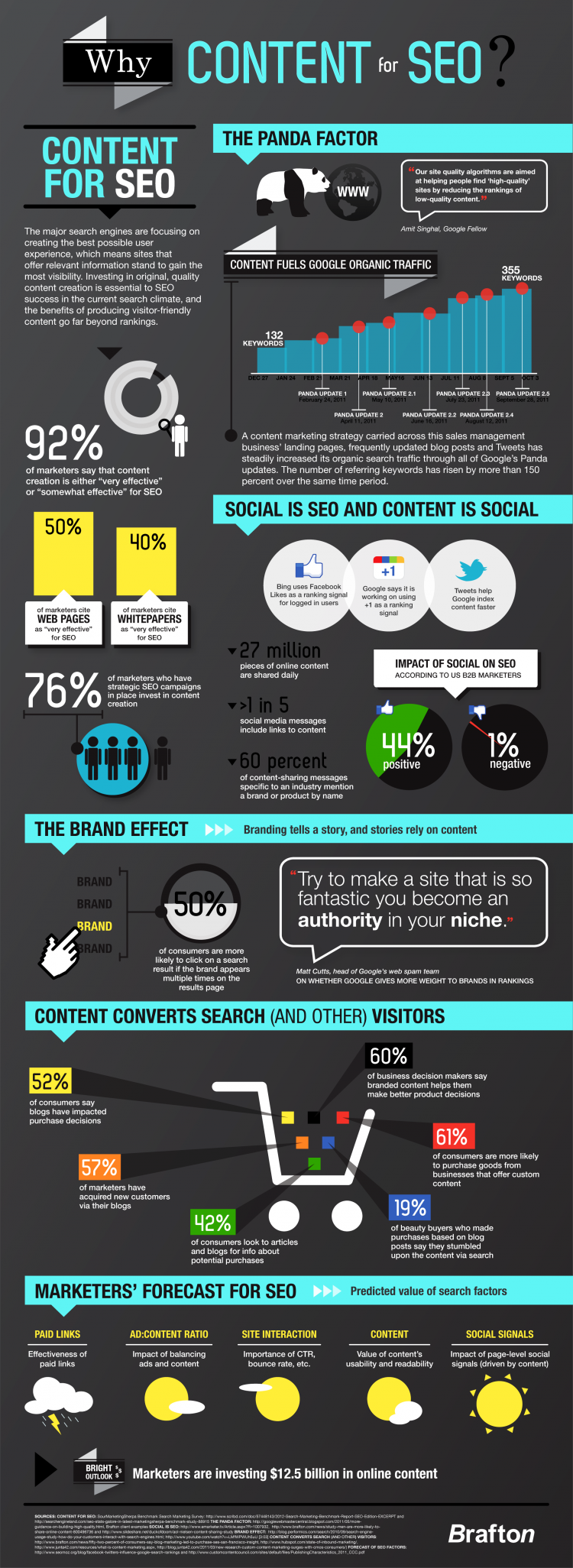Google’s challenge is to use mathematical formulas to determine what provides a great user experience and what content is compelling and unique. They are attempting to rank this type of content high in their search engine.
These are the key elements gleaned from 23 guidelines from Google’s blog to provide guidance for creating content that begs to be read, viewed and shared.
- Would you trust the content in this article?
- Is this article written by a thought leader who is passionate about their topic?
- Does the blog or website have duplicate or redundant articles on the same or similar topics with slightly different keyword variations?
- Would you trust this site enough to give your credit card information?
- Is the spelling in the article correct?
- Is the content written for search engines, or is it created for creating reader interest?
- Does the article provide original content or information such as research and expert analysis?
- Does the page provide better value when compared to other pages in search results?
- Is the quality control of the text article obvious?
- Is the article presenting both sides of the story?
- Is the blog a respected and recognized authority on the topic?
- Has the content been scraped and sourced from many writers and websites, then spread across a network of almost faceless network of sites (also known as content farms)?
- Was the article edited with care or is it sloppy?
- If you were looking for health advice would you trust the content of the website?
- Is the brand viewed as an authoritative source when mentioned by name?
- Is the content comprehensive and broad?
- Is the information obvious or does it provide in depth insights?
- Would you want to bookmark it to read later, and also is it so valuable that you would want to share with it with friends?
- Is the blog or website full of ads that distract you from reading the articles and view the content?
- Is the quality of the article so good that you would expect to read it in a magazine or printed publication?
- Are the articles brief and superficial with little specific detail that adds real value?
- Is the blog created with great care and attention to detail?
- Would users complain when they see pages from this site?
Google is attempting to use its algorithms to detect this type of quality content and this task, as they said earlier, is “part science and part art“. They are providing strong hints on what type of content you should be creating. This is the end game and it appears that they are having success in moving in that direction, but there is more work to be done.
They are also using social signals to rank content on its quality and attractiveness to readers and viewers. So keep creating content that is so good that it begs to be read, viewed, and shared.
That should be your goal!

For better view of the infographic above click here: http://www.brafton.com/infographics/why-content-for-seo?utm_source=infographic&utm_medium=referral&utm_content=large&utm_campaign=why-content-for-seo
No comments:
Post a Comment